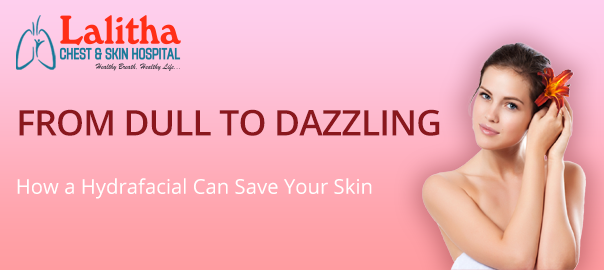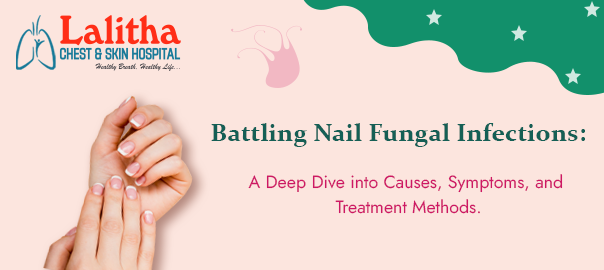Everyone desires smooth, radiant, and youthful-looking skin. Instead of investing heavily in various oils, creams, essences, and serums for a multi-step skincare routine, you might achieve a natural glow with a proven and trusted HydraFacial treatment.
“The HydraFacial offers several benefits, including deep cleansing, exfoliation, and hydration, which result in smoother, brighter, and more youthful-looking skin. It also helps improve the appearance of fine lines, wrinkles, and hyperpigmentation while promoting overall skin health,” says a lady skin specialist in Karimnagar at Lalitha Chest & Skin Hospital.
The HydraFacial is a multi-step facial treatment usually conducted with a proprietary machine (HydraFacial MD) created by Edge Systems. Over 3.5 million HydraFacial treatments are performed by dermatologists worldwide each year, attesting to their effectiveness in transforming skin health for the better.
But what is the science behind HydraFacial, what are its types, benefits, and who exactly needs a HydraFacial? With insights from dermatologist Dr. B. Jyothi in Karimnagar, we delve into HydraFacial, exploring its science, customizable options, and the amazing benefits it offers.
The Science Behind The HydraFacial Glow
The HydraFacial isn’t just a feel-good pampering session; it’s backed by science! Here’s a breakdown of the magic happening during each step:
- Vortex Technology: This unique technology utilizes a swirling vortex tip to painlessly cleanse, exfoliate, and extract impurities. It removes dead skin cells without harsh scrubbing, minimizing irritation and discomfort.
- Customized Serums: The HydraFacial isn’t a one-size-fits-all treatment. Our lady skin specialists will choose a specific blend of serums packed with powerful ingredients like hyaluronic acid, antioxidants, and peptides to target your unique concerns. These serums are delivered deep into your skin, bypassing the surface, for maximum effectiveness.
- Immediate and Long-Term Results: You’ll see a visible difference in your skin’s radiance and clarity immediately after your HydraFacial. Over time, with regular treatments, you’ll experience a cumulative effect with improved skin texture, reduced pore size, and a more youthful appearance.
Benefits of a HydraFacial
- Improves skin tone and texture
- Reduces wrinkles and fine lines
- Minimizes pore size
- Evens out skin pigmentation
- Hydrates and plumps the skin
- Improves overall skin health
Who Can Benefit from a HydraFacial?
The beauty of the HydraFacial is that it’s suitable for a wide range of skin types and concerns. Here are some specific examples:
- Dry Skin: HydraFacial’s hydrating serums will leave your skin feeling plump and dewy.
- Oily Skin: The treatment helps regulate oil production and minimize pore size.
- Acne-Prone Skin: Regular HydraFacials can help prevent breakouts and minimize existing blemishes.
- Mature Skin: The treatment addresses fine lines, wrinkles, and uneven skin tone.
- Hyperpigmentation: HydraFacial serums can help lighten sunspots and dark patches.
Types of HydraFacial Treatments
There are generally three main types of HydraFacial: Signature, Deluxe, and Platinum. Each level offers increasing benefits to target different skin concerns.
- Signature HydraFacial: This is the most basic and most affordable HydraFacial treatment. It includes:
- Cleansing and exfoliation to remove dead skin cells and impurities.
- Extractions to remove blackheads and whiteheads.
- Hydration with hyaluronic acid and other nourishing serums to plump and hydrate the skin.
- Deluxe HydraFacial: This is a more advanced HydraFacial treatment that includes everything in the Signature HydraFacial, plus:
- A booster selected to target specific skin concerns, such as fine lines and wrinkles, hyperpigmentation, or acne. The Deluxe HydraFacial is a good option for people who want to address specific skin concerns in addition to cleansing and hydrating their skin.
- Platinum HydraFacial: This is the most advanced and most expensive HydraFacial treatment. It includes everything in the Deluxe HydraFacial, plus:
- Lymphatic drainage to reduce puffiness and improve circulation.
- Red LED light therapy to stimulate collagen production and improve skin texture. The Platinum HydraFacial is a good option for people who want the most comprehensive HydraFacial treatment available.
Consult with a dermatologist to determine the best type of HydraFacial treatment for your individual needs. We can assess your skin concerns and recommend the appropriate booster serums to achieve your desired results.
To get detailed information and potential treatment approaches, it’s advisable to schedule an appointment with a specialized dermatologist. If you’re still looking on Google for “best skin specialist near me” or a “dermatologist clinic near me” to improve your skin health, then let us save you time! Dr. B. Jyothi is Karimnagar’s best dermatologist and specializes in advanced skin treatments, including HydraFacial, to transform skin health. For inquiries, feel free to contact us at Lalitha Chest & Skin Hospital.




